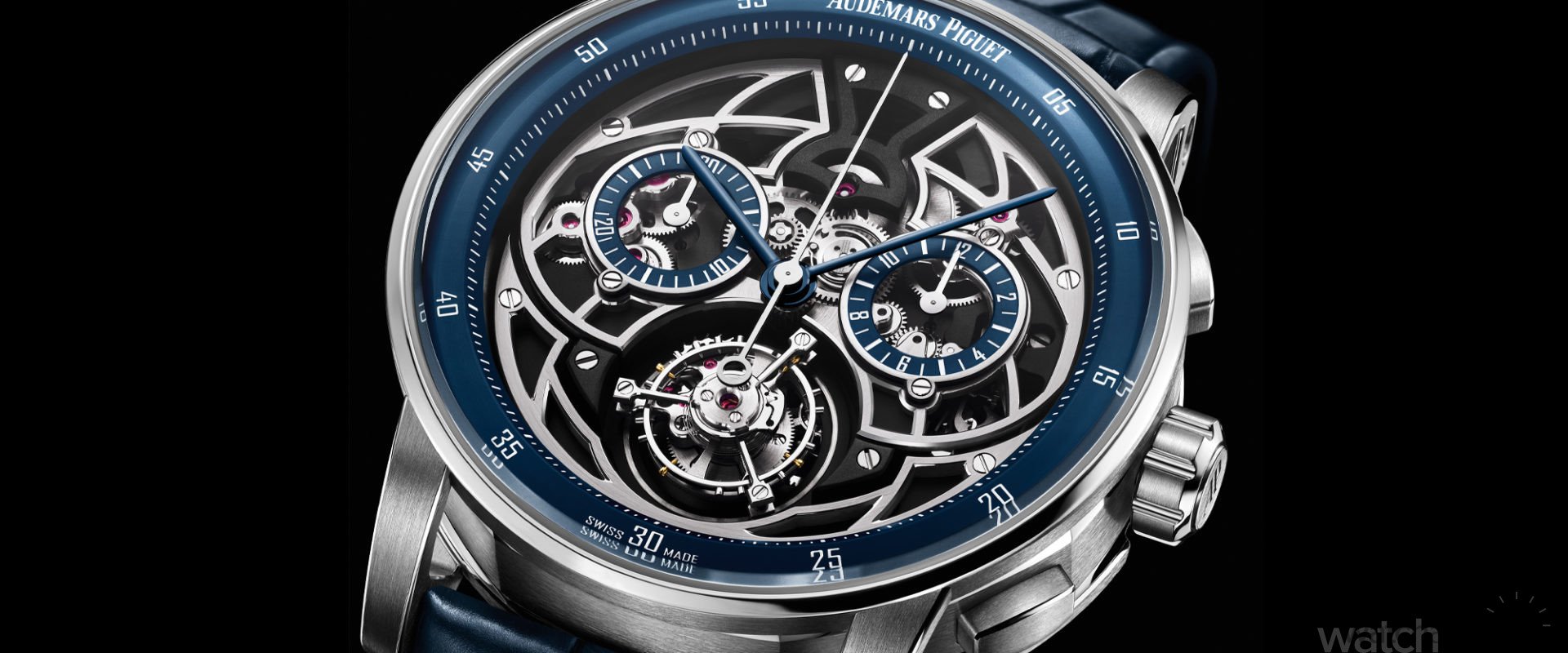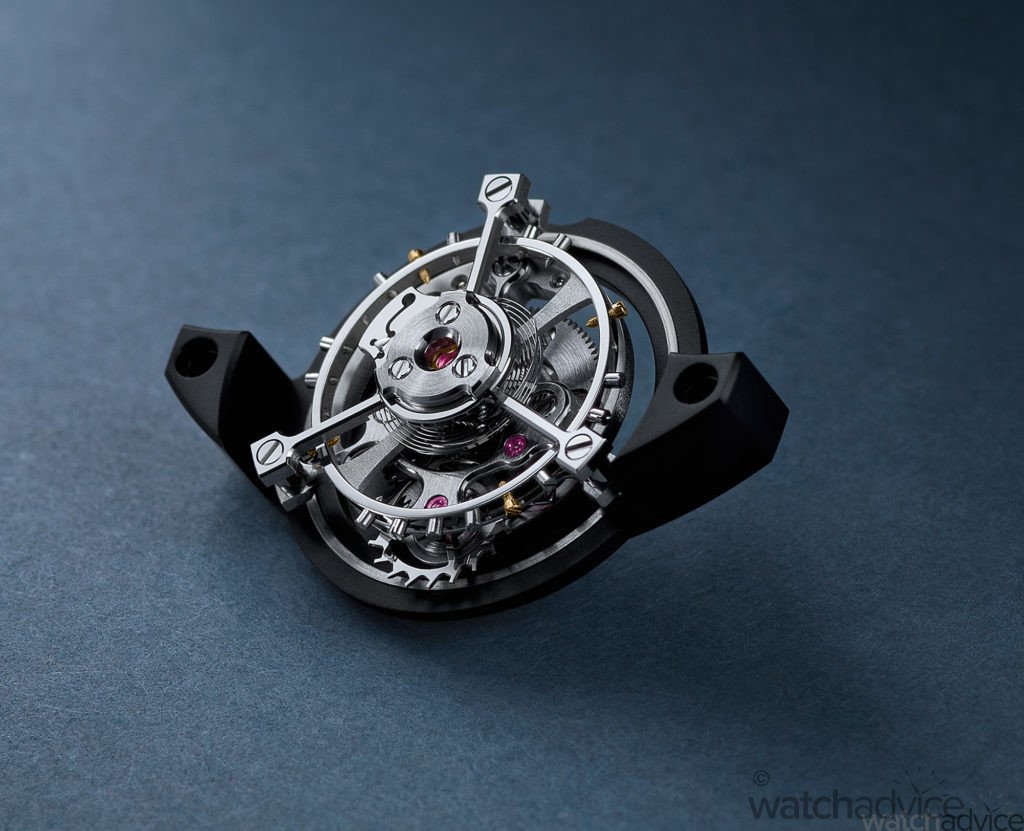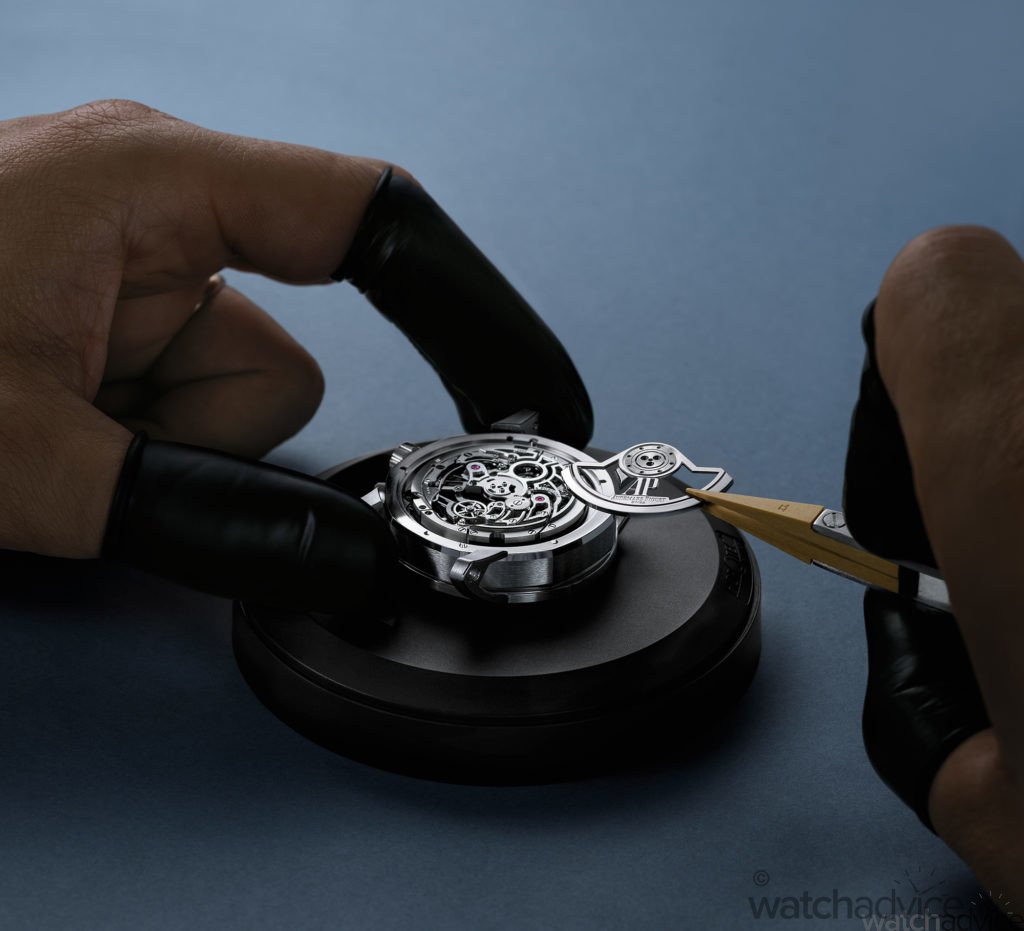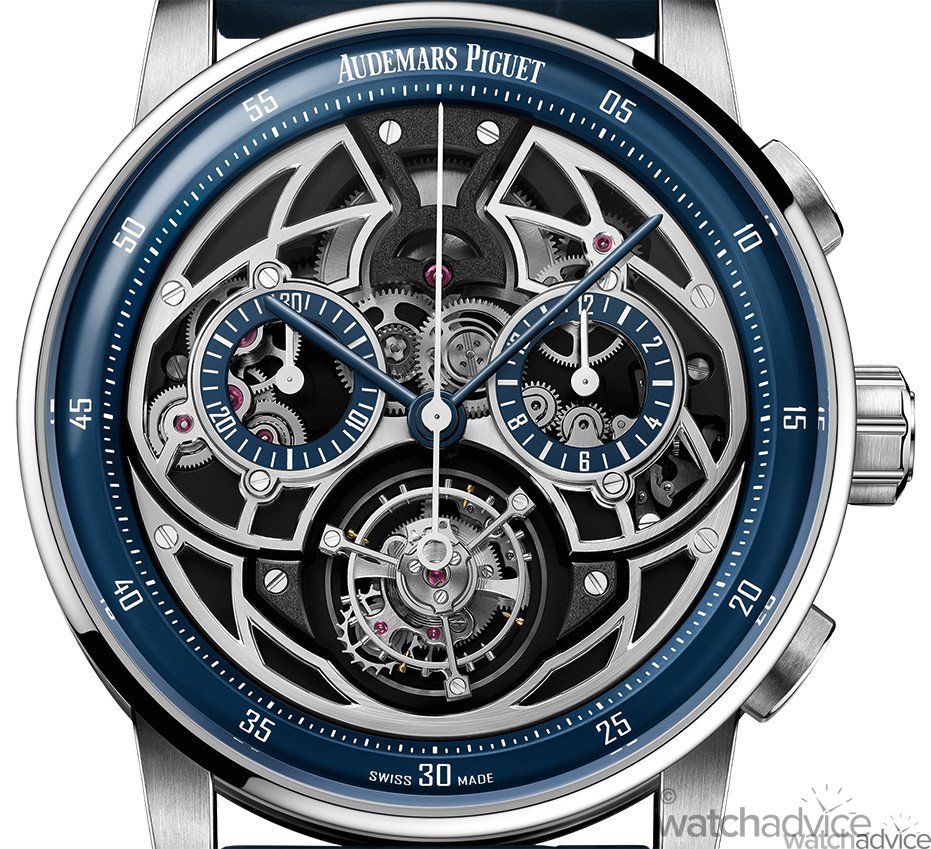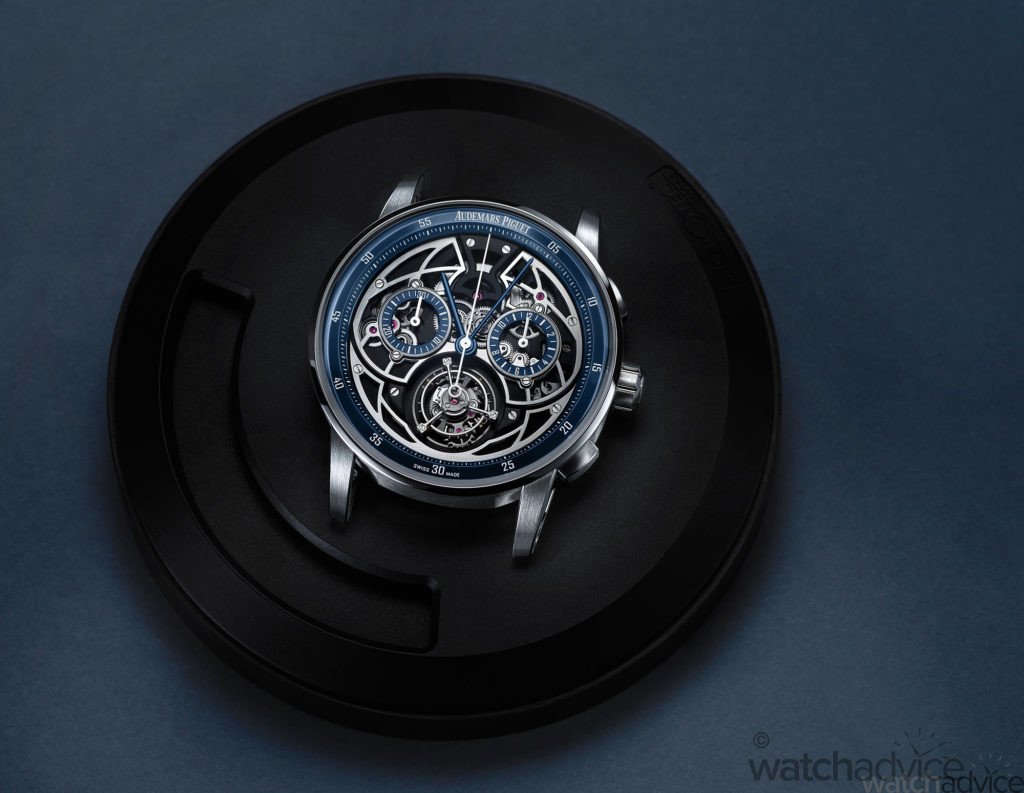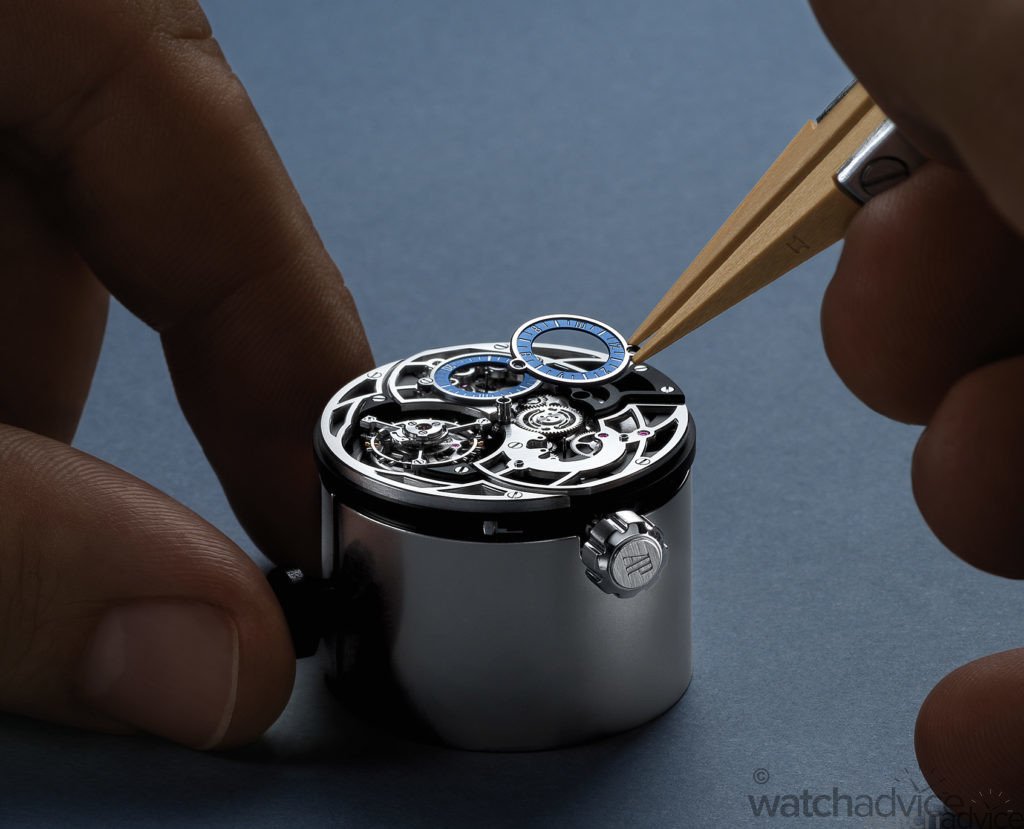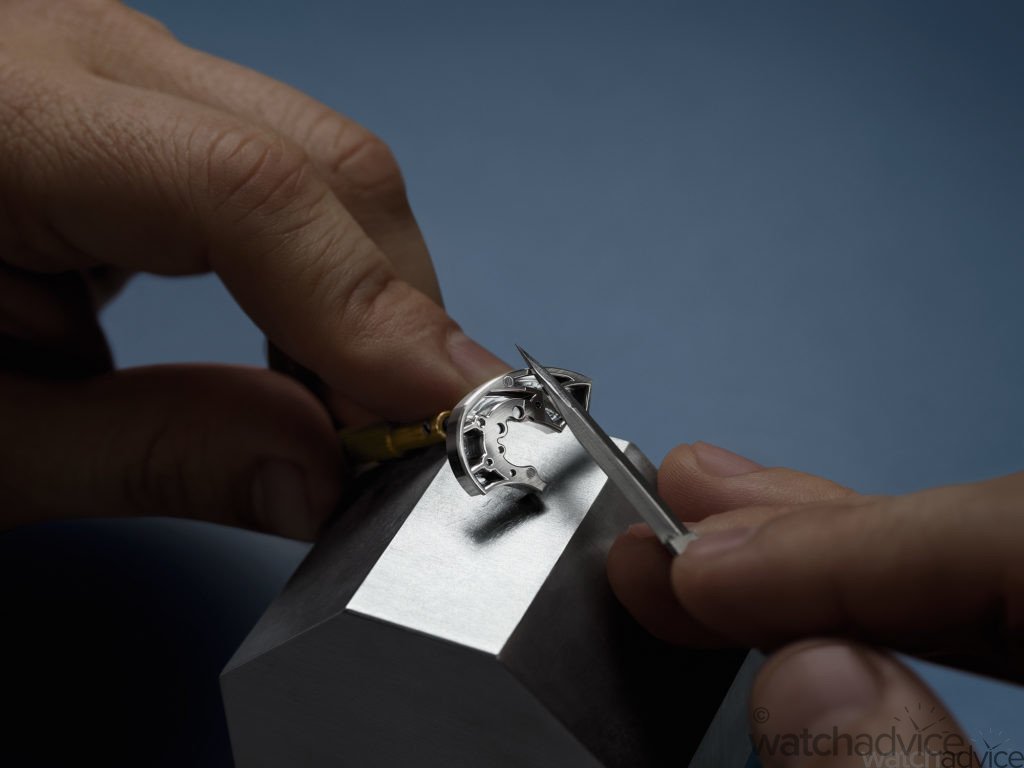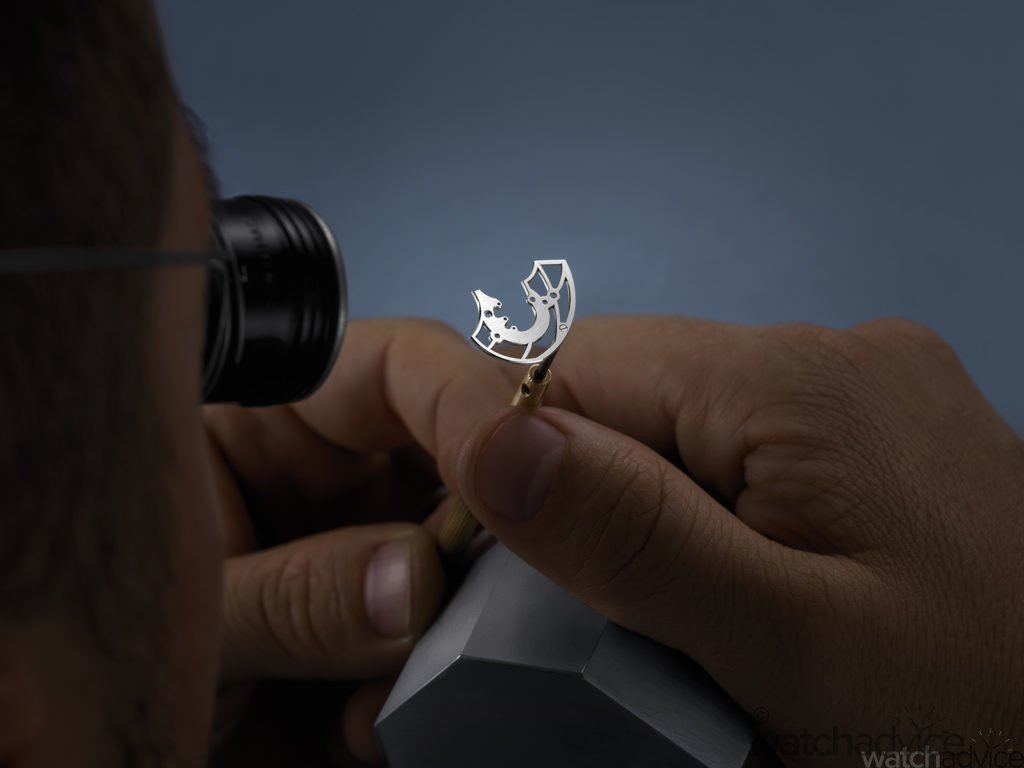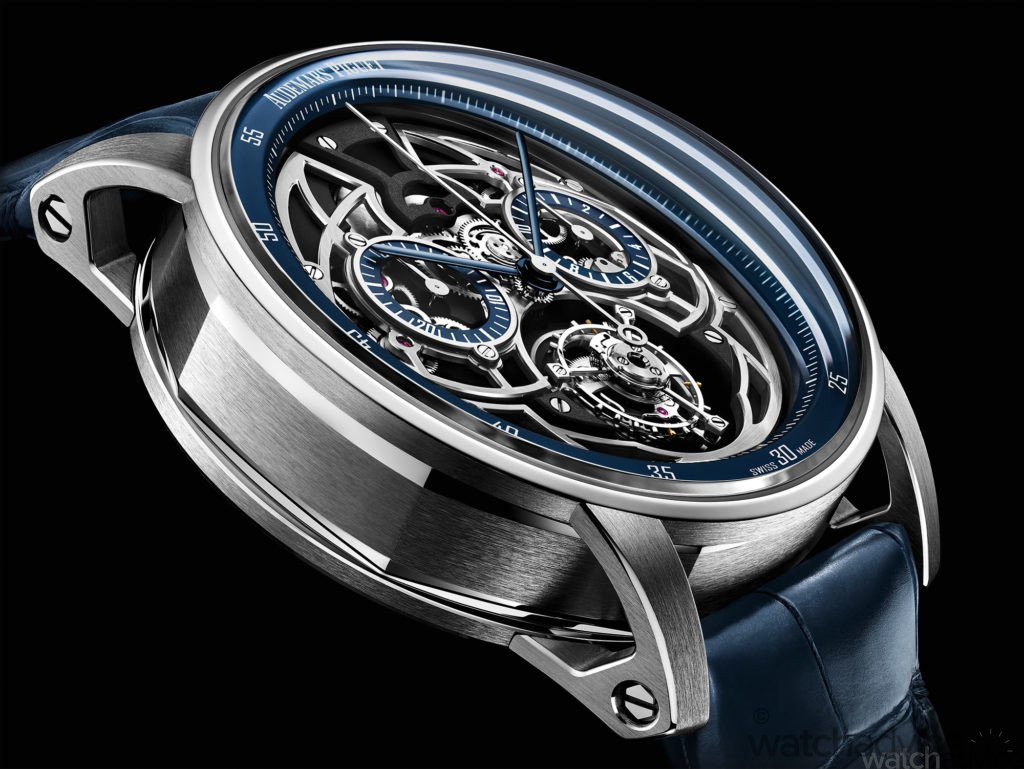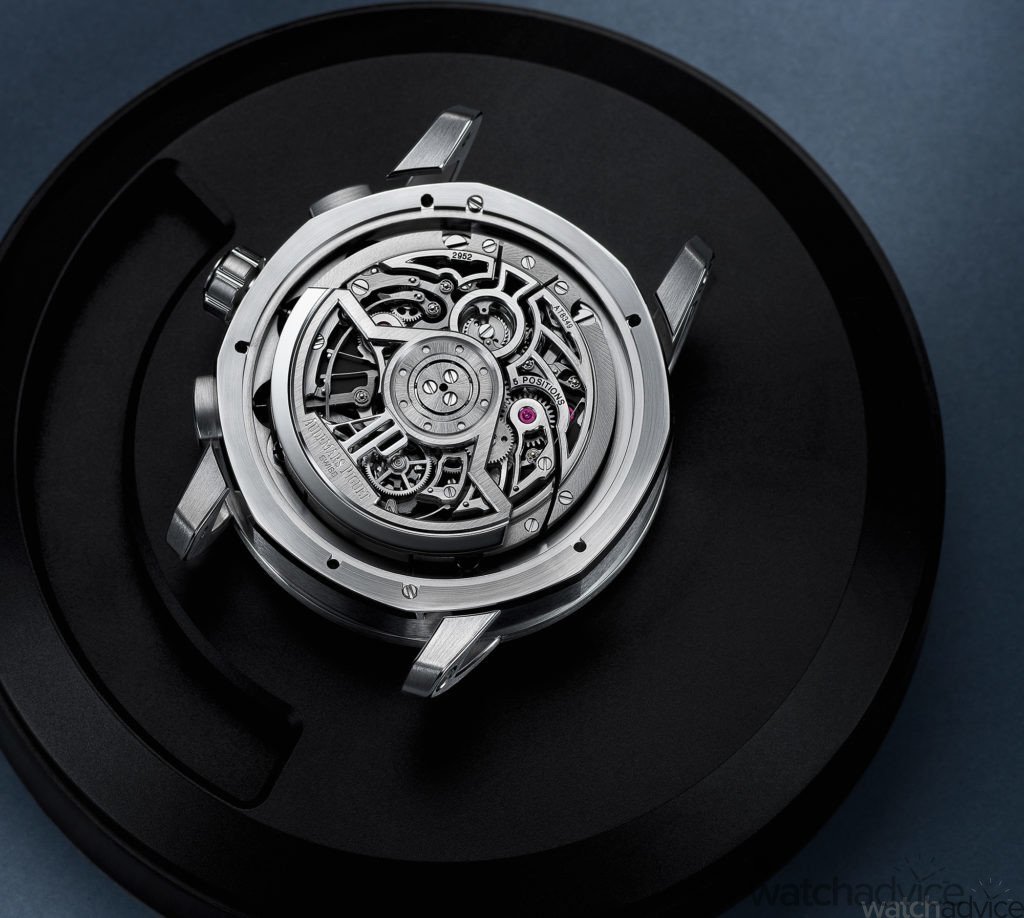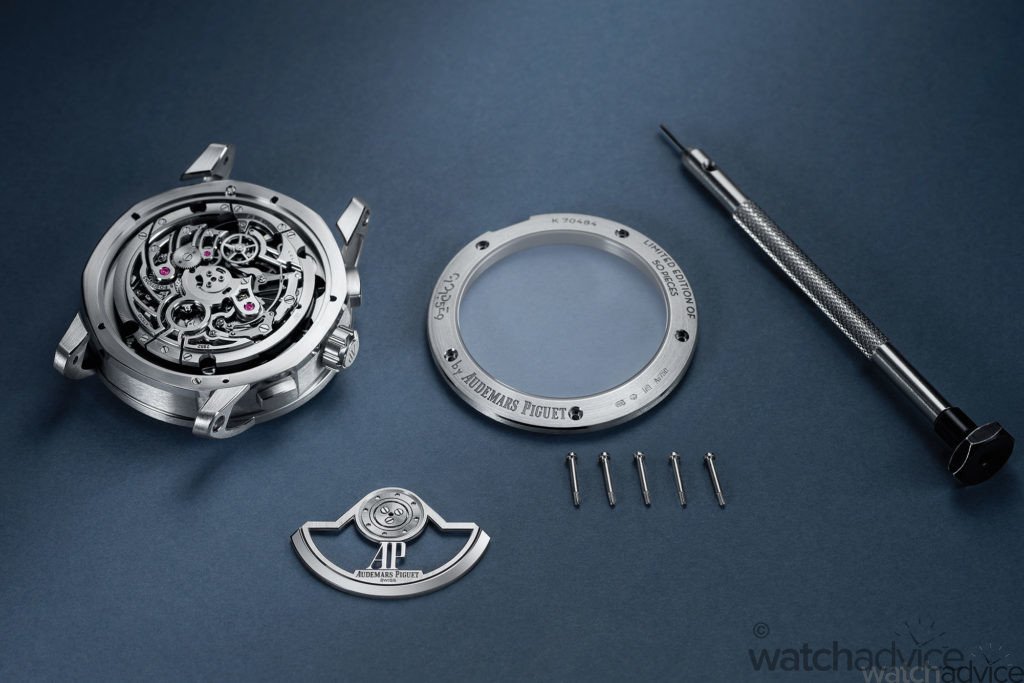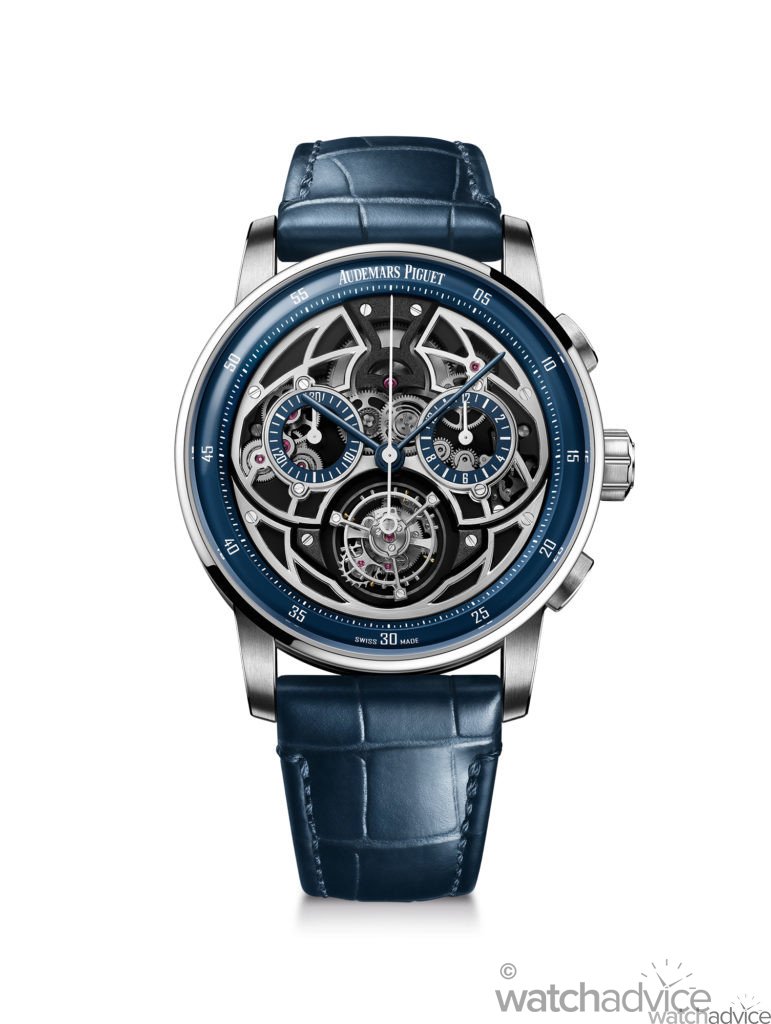Audemars Piguet, a brand that is arguably part of the holy trinity of watch brands, has released a timepiece that is not only complex but quite breathtaking to look at. The new Audemars Piguet Selfwinding Flying Tourbillon Chronograph falls into the brand’s CODE 11.59 collection, which was released back in 2019.
For those that may not know, CODE 11.59 is an entirely new line of watches that sits beside Audemars Piguet’s most iconic collections, such as Royal Oak, Offshore, Millenary and Haute Joaillerie. Audemars Piguet has been planning CODE 11.59 for almost five years, with careful consideration taken into movement development and the unique case and dial designs. CODE 11.59 paves the way for the future of Audemars Piguet as the brand looks to expand their collections to suit the varying customer tastes.
The latest Selfwinding Flying Tourbillon Chronograph is as the brand put’s it, a “contemporary take on tradition”. Never afraid to dwell into the unknown, Audemar’s Piguet dares to combine the prestige of the Flying Tourbillon Chronograph with the modern flyback chronograph. The flyback chronograph is designed mainly to record consecutive times which become very useful for pilots, divers and motor racing teams. Compared with tradition chronographs which require three button presses (start, stop, reset), the flyback chronograph only needs to be pressed once (flyback button) and the chronograph seconds hand will instantly fly back to zero to restart the count again.
The tourbillon mechanism is a symbol of watchmaking excellence, with only a few watchmakers being able to perfect it in the watch industry today. Audemars Piguet was the first brand to give life to the selfwinding tourbillon mechanism. In the early 1980’s Audemar’s Piguet’s General Director Georges Golay asked a newly arrived young constructor to the workshops, Serge Meylan, to design the first selfwinding tourbillon in the history of watchmaking. Serge not only successfully designed the selfwinding tourbillon, but he also managed to fit it into an ultra-slim 5.3mm thick case. To this day, it is still the smallest selfwinding tourbillon mechanism.
The flying tourbillon is a complicated mechanism that was first introduced by the brand when it released the Royal Oak Concept collection back in 2018. With the latest CODE 11.59 Selfwinding Flying Tourbillon Chronograph, the brand combines both tradition and modernity with the flying tourbillon and flyback chronograph.
The Audemars Piguet Selfwinding Flying Tourbillon Chronograph features an 18-carat 41mm white gold case, which is water-resistant to approximately 30m. The case, much like the dial, has been skeletonised to an extent, with the lugs being hollowed out. The case, along with different finishing, also has a nice blend of curved, chamfered and sharp edge, to give a sharp yet refined look.
Audemars Piguet has created something special with the dial on this timepiece. It’s as complicated as it is artistic. The three-dimensional architectural face blends the dial and movement. The movement features rhodium-toned and black galvanic open-worked bridges which is a brilliant move, as it only shows what the viewer needs to see, and doesn’t over clutter the dial.
The various design elements, along with the movement, have more than 100 hand-polished angles, which have been meticulously done by hand with an alternation of sandblasting and satin-brushing.
Chronograph counters at 3 o’clock (12-hour) and 9 o’clock (30-minute) have also been skeletonised to show more of the movement underneath. The flying tourbillon makes it’s elegant rotations at 6 o’clock position. The dial has a blue lacquered inner bezel along with a similar touch for the chronograph rings. The chronograph seconds hand has been done in white gold, which is the only slight drawback of this piece. This seconds hand can somewhat blend in with the dial due to the rhodium finished bridges. Other touches of colour have been added to the dial from the jewels in the movement itself.
Audemars Piguet has used a sapphire case back for the Selfwinding Flying Tourbillon Chronograph, which showcases through satin-brushed and sandblasted openwork bridges some of the watch’s calibre 2952 movement.
This is the brand’s latest selfwinding movement which features the high calibre flying tourbillon and flyback chronograph mechanisms. The movement is beautifully designed, just like the front dial. The oscillating weight has been skeletonised as well so that more of the movement can be seen. This oscillating weight is made from 22-carat white gold, which perfectly matches the bridges of the movement and also the watch’s case.
The final touch to this very aesthetically pleasing timepiece is the dark blue hand-stitched alligator strap it comes on. This strap matches nicely with the blue chronograph counters, hour and minute hands and also the inner bezel.
The Audemars Piguet Selfwinding Flying Tourbillon Chronograph is limited to 50 pieces. This complex timepiece with its modern design and three-dimensional architectural elements showcases the brand’s desire for a progressive approach to what is traditional craftsmanship.
Michael Friedman, Head of Complications at Audemars Piguet, summed up this new timepiece nicely by saying “The thread that connects all of our products – past and present – is that our cases are the canvas for highly detailed hand-finishing that creates a play of light when one examines the case’s architectural geometry. The new Code 11.59 by Audemars Piguet Selfwinding Flying Tourbillon Chronograph amplifies this experience by emphasising the contrast of light and the various finishing techniques of the open-worked dial elements and the multi-layered complex mechanism. All aspects of the watch – case, dial and movement – are essential platforms for our watchmakers and artisans to express their craft and the continuing story of Audemars Piguet.”


